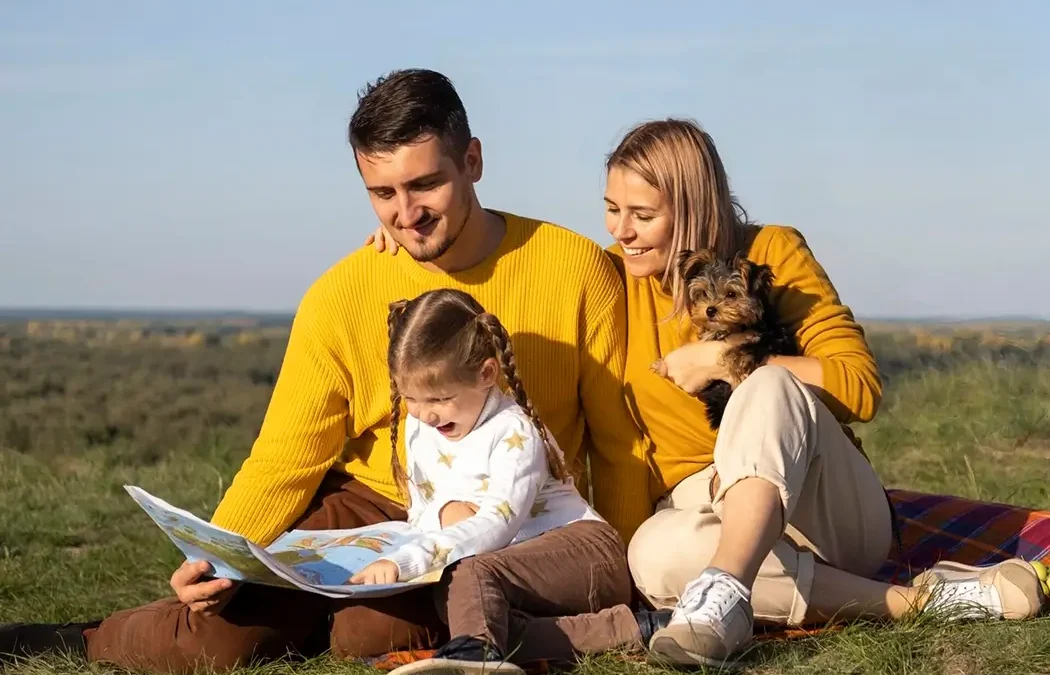Traveling with children can be a wonderful bonding experience,You can gain different perspectives on places when traveling with children. It is often easier to get to meet local people, people can be friendlier, and when picking educational experiences for children you often learn something yourself.However, it also entails extra planning to ensure that everyone has a good time. You must balance the demands of everyone in the group while also attempting to minimize many of the additional costs associated with group travel. You may have to cope with bored children at airports or on long travels, extra luggage when they become tired, and frustration when they complain after all the planning effort when you could have left them with the grandparents.
BY PLANE
Generally, flying is the most uncomfortable way to travel both for children and their parents. However, it is the usually the fastest and often the only way to get to certain places, and for some trips you’ll just have to brace and prepare for the inevitable. Try to find a direct flight to your destination, at off-peak travel times. The less time you spend walking through airports and clearing security check points, the better. You are going to have to carry plenty of extra baggage, and this will become a nuisance if you have to keep unpacking. A crowded airport is full of stimuli that can upset/ excite/ bewilder a young child, so traveling at a quieter time will make the journey easier.
BY CAR
You may want your children to use appropriate child car seats when travelling by car. They are as important as seat belts are for you. Some countries require this. In some countries child seats can be rented along with a vehicle, but you may still need to bring your own. It is well worth researching well ahead of time what you need to do and checking with your travel agent or car rental company to see what is ideal.
- Try to break the trip up into small sessions. Keeping a young and energetic toddler confined to a car seat can be as stressful for them as it is for you. On the other hand, having a lot of sessions in a row is not necessarily better.
- Take a music collection your child enjoys. From time-to-time children are more than happy to bop along to your choices because at that age they don’t have a say, or an opinion, but when they’re distressed, over-tired or just plain bored – you need a better trick up your sleeve. Soundtracks to films such as Jungle Book and Mary Poppins seem to do the trick for younger children as well as a selection of fun children’s stories on CD. When all else fails, try soothing classical music to keep baby cooing. An alternative way is to scan the local radio for music stations.
- For toddlers and up, tablet computers can be a godsend. Pre-load them with child-friendly entertainment and games as you may not be able to get an internet connection while you are travelling. If your child already has a tablet and is familiar with it, buy them some new games that they haven’t played yet and introduce them as you’re travelling. Keep in mind that some children can get travel sickness using these while on the move.
- Drive early. Adults are a lot better than kids at adapting their daily rhythm. If you start your tour before sunrise the kids might still sleep for a few hours in the car.
- Take a selection of toys to keep them occupied. Keep a little rucksack in the car filled with books and toys and keep a selection of “non-toys” to pull out in an emergency. A bicycle tire pump and a glove box road atlas are good and safe options to raise a smile as well as make them think they are playing with something that they are not usually allowed.
- Frequent stops for fresh air, nappy changes and just plain freedom, are essential on road-trips. Pack a blanket and a sandwich to make these stops more fun for all.
BY FOOT
You may want to put some thought in how you are moving around when not using vehicles. A baby sling can be a good alternative to strollers, especially if streets and roads are in bad shape. Some slings can be used to carry even quite big children (up to school age and more). If considering this, be sure both you and your child are used to the sling you choose. Specialized backpacks are also available, mostly for quite big children.



